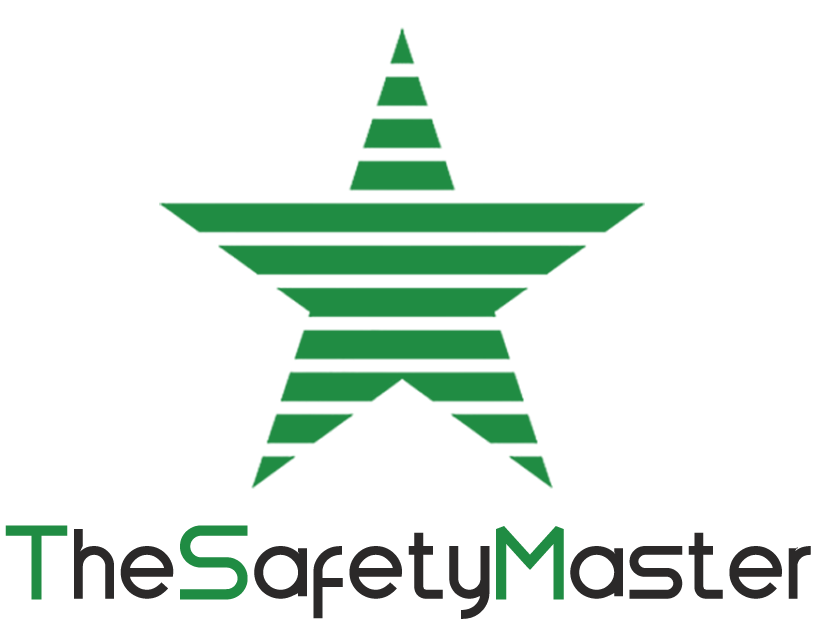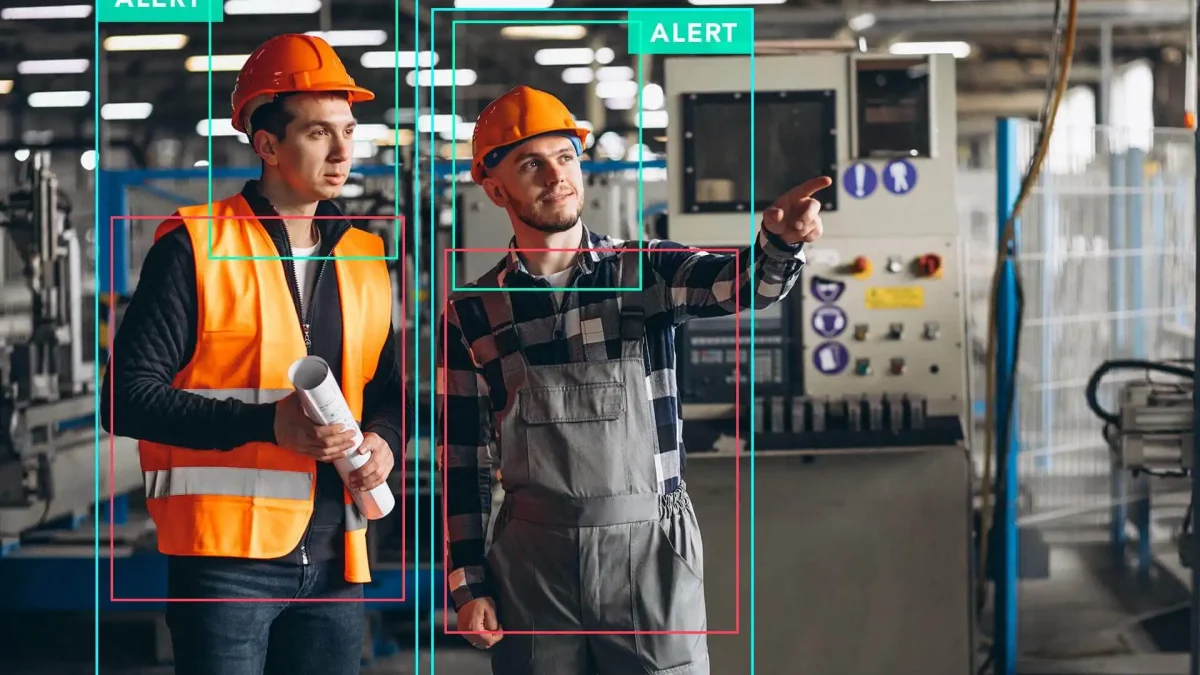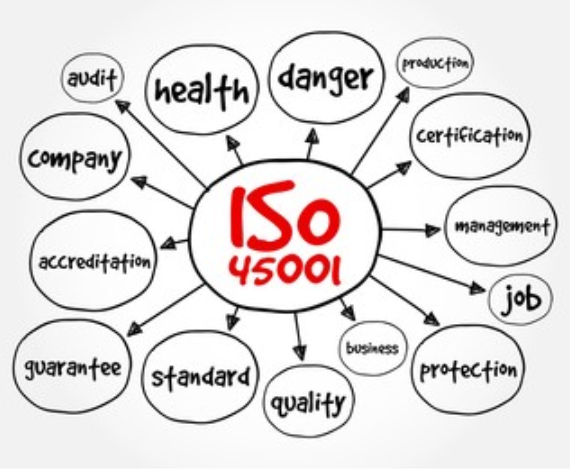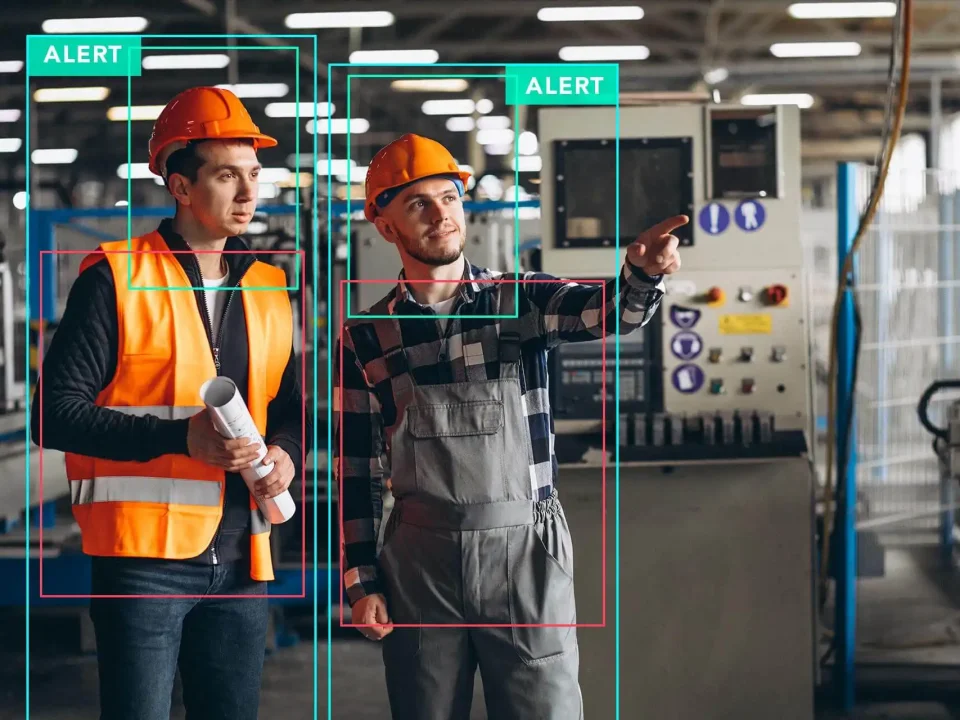AI Safety in the Workplace: How Artificial Intelligence is Transforming Occupational Health & Safety in 2025

Revolutionizing Process Safety Management: How AI Is Transforming Hazard Recognition and Risk Analysis
July 14, 2025
Leveraging Technology for Enhanced Job Safety Analysis & Common Mistakes to Avoid in Job Safety Analysis
August 15, 2025Artificial Intelligence (AI) has evolved far beyond being just a buzzword—it is now a critical enabler of safer, smarter, and more efficient workplaces. In 2025, AI is no longer a futuristic concept; it’s embedded in daily operations across industries, reshaping how organizations address Occupational Health & Safety (OHS).
From predictive analytics that foresee potential hazards to AI-driven wearables that monitor worker health in real-time, the technology is revolutionizing traditional safety practices. This blog explores how AI is transforming workplace safety, the benefits it brings, and how companies can integrate AI-powered solutions effectively.
1. The New Era of Workplace Safety in 2025
The workplace safety landscape is undergoing a radical transformation. Traditional safety measures, while effective, often rely heavily on manual checks, historical data, and reactive interventions. AI changes the game by introducing real-time monitoring, predictive capabilities, and automated decision-making.
With AI’s ability to analyze vast amounts of data quickly and accurately, organizations can now identify risks before they escalate into incidents. This is particularly relevant for high-risk sectors like manufacturing, construction, chemical processing, and oil & gas, where safety is paramount.
2. Key AI Applications in Occupational Health & Safety
a. Predictive Risk Analysis
AI systems analyze data from sensors, cameras, and safety logs to detect patterns that may indicate an impending hazard. For example, if machinery shows abnormal vibration patterns, AI can flag it for immediate maintenance before it causes an accident.
b. Real-Time Worker Monitoring
AI-powered wearables track vital signs, fatigue levels, and environmental factors such as temperature or air quality. This enables supervisors to act swiftly if a worker’s health or surroundings pose a risk.
c. Intelligent Safety Inspections
Instead of traditional manual inspections, companies are now adopting AI-integrated Safety Audit Service solutions. These tools can scan workplaces using drones or cameras, automatically identifying compliance gaps and hazardous conditions.
d. Automated Compliance Management
AI ensures compliance with safety regulations by tracking workplace changes and automatically generating compliance reports. This reduces human error and speeds up the audit process.
3. Enhancing Industrial Safety with Process Safety Management
In industries dealing with hazardous chemicals and high-risk operations, Process Safety Management (PSM) is critical. AI takes PSM to a new level by:
- Monitoring Critical Equipment: AI predicts equipment failures by analyzing sensor data, minimizing downtime and preventing catastrophic incidents.
- Incident Simulation: AI can simulate accident scenarios to assess response strategies and identify weaknesses in safety protocols.
- Data-Driven Decision Making: By processing historical and live operational data, AI helps safety managers make informed, proactive decisions.
With AI, PSM becomes not just a compliance requirement, but a strategic tool for reducing operational risks.
4. The Role of Safety Consultants in the AI Age
Even with the most advanced AI tools, expert human oversight remains essential. A seasoned Safety Consultant can bridge the gap between AI technology and practical workplace application.
Safety consultants ensure that:
- AI solutions are integrated in alignment with industry regulations.
- Data from AI systems is interpreted correctly for actionable insights.
- Workers are trained to use AI-driven safety tools effectively.
They also play a vital role in customizing AI systems for unique operational environments, ensuring both maximum safety and operational efficiency.
5. AI in Behavior-Based Safety Training
Human behavior is a major factor in workplace safety incidents. AI-powered Behavior-Based Safety Training programs now track, analyze, and improve safety-related behaviors across the workforce.
Here’s how AI enhances behavioral safety:
- Observation Analysis: AI tools analyze video footage to identify unsafe behaviors, such as improper lifting techniques or neglecting protective gear.
- Personalized Feedback: Workers receive AI-generated feedback tailored to their safety performance.
- Gamification: AI-driven training modules use gamification to make safety learning engaging and retention-friendly.
This data-driven approach ensures training is continuous, targeted, and far more effective than traditional classroom sessions.
6. AI and HAZOP Training
In process industries, Hazard and Operability Studies (HAZOP) are vital for identifying and addressing potential operational risks. AI-enhanced HAZOP Training offers:
- Simulated Scenarios: AI can create realistic hazard simulations, giving trainees hands-on experience without real-world risks.
- Data Integration: AI systems integrate historical HAZOP study data with current operational data to provide context-rich learning.
- Continuous Updates: AI ensures training content evolves with new safety regulations, industry best practices, and emerging risks.
This results in more prepared, confident, and capable safety professionals.
7. Real-World Examples of AI-Driven Safety in 2025
Several industries are already leading the way in adopting AI safety technologies:
- Construction: AI drones inspect sites for hazards, while wearables monitor workers’ posture and fatigue.
- Manufacturing: Predictive AI systems prevent machinery breakdowns that could cause injuries.
- Oil & Gas: AI analyzes seismic data to prevent accidents during drilling operations.
- Healthcare: AI-powered monitoring ensures hospital staff adhere to hygiene and safety protocols.
These success stories demonstrate that AI is not replacing safety teams—it’s empowering them.
8. Benefits of AI in Workplace Safety
- Proactive Hazard Prevention: Identifies risks before incidents occur.
- Increased Efficiency: Reduces the time needed for inspections and audits.
- Improved Compliance: Automatically aligns operations with safety regulations.
- Enhanced Worker Morale: Employees feel safer and more valued.
- Cost Savings: Prevents costly accidents, downtime, and regulatory penalties.
9. Challenges and Considerations
While AI offers immense benefits, there are challenges:
- Data Privacy: Worker monitoring must respect privacy rights.
- Integration Costs: Implementing AI can be expensive initially.
- Skill Gaps: Workers and managers must be trained to understand and utilize AI effectively.
- Over-Reliance on Technology: AI should supplement, not replace, human judgment.
These challenges can be overcome with careful planning, expert guidance, and a gradual integration approach.
10. The Future of AI in Workplace Safety
In the next few years, we can expect AI to become even more intuitive and predictive, with capabilities like:
- Integrating augmented reality (AR) for immersive safety training.
- Using AI-powered robotics for hazardous tasks.
- Real-time multilingual safety alerts for global workforces.
Organizations that embrace AI now will be well-positioned to lead in safety innovation, employee well-being, and operational excellence.
Final Thoughts
AI in workplace safety is no longer optional—it’s a necessity for forward-thinking organizations in 2025. From Safety Audit Services to HAZOP Training, AI is reshaping the way companies protect their people, assets, and reputations.
However, technology alone isn’t the answer. Partnering with an experienced Safety Consultant and investing in AI-enhanced training programs like Behavior-Based Safety Training and Process Safety Management ensures that AI’s potential is fully realized while keeping human expertise at the core.
The future of occupational health and safety is here—and it’s powered by AI. The question is, are you ready to embrace it?




